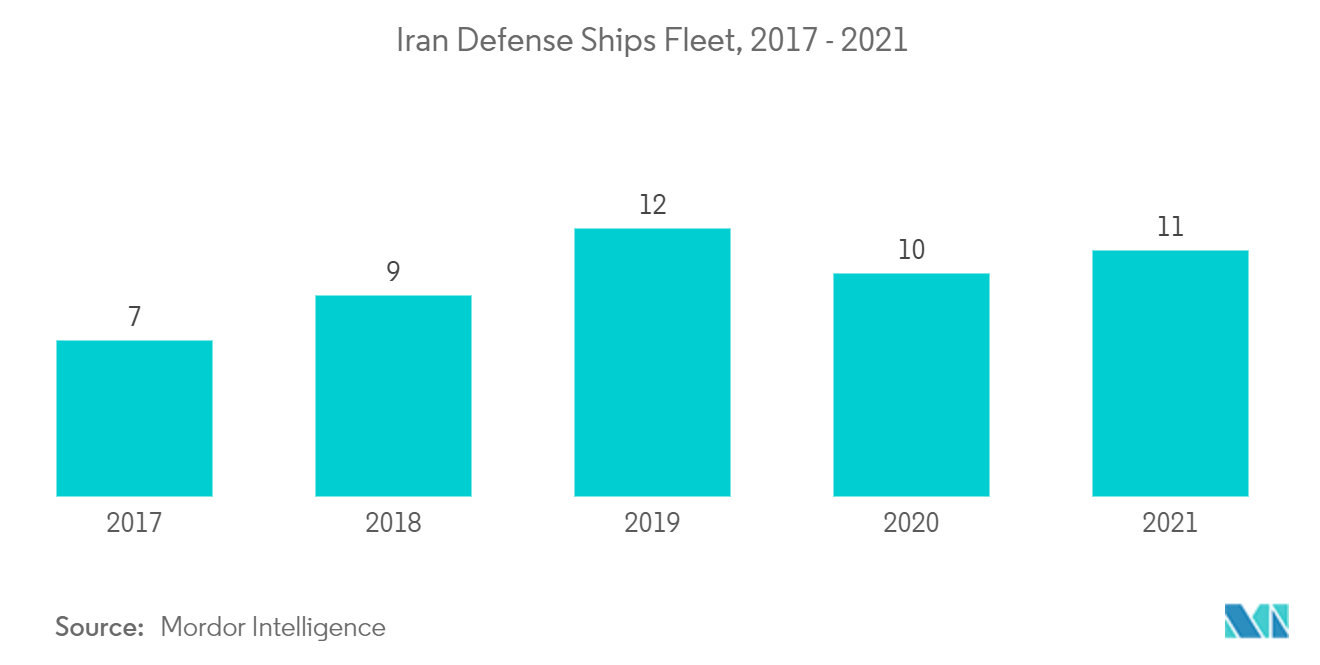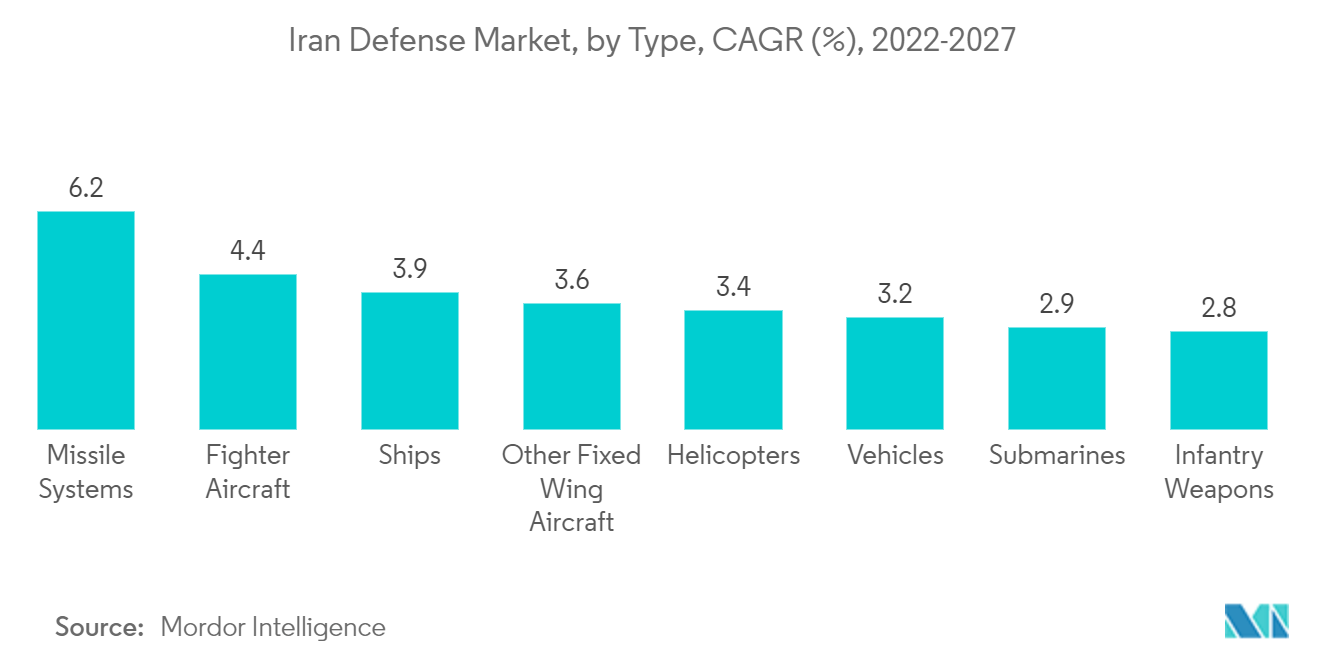Market Trends of Iran Defense Industry
This section covers the major market trends shaping the Iran Defense Market according to our research experts:
Ships Will Remain a Opportunity Pocket in Iran Defense Market
The ships segment is likely to remain the prominent segment in Iran's defense sector over the coming decades. The Iranian Navy possesses an established submarine fleet, comprising both Russian and Iranian-built vessels. Iran's government is focused on the development of destroyers and taking multiple steps to robust its fleet. Destroyers are larger in size than the frigates, capable of carrying and generating the power for powerful high-resolution radar and many vertical launch cells in a convenient manner. In addition, these warships can provide theatre-wide air and missile defense for forces such as carrier battle groups.
Iran has already built Moudge class destroyers in the 1,500-2,000-ton category, which equates to light frigates by international standards. However, the type has lacked effective air defenses, something which the Iranian Navy is reportedly addressing.
As of 2021, the Iranian Navy is reportedly constructing a 6,000-ton destroyer named Loghman. The Loghman is designed as a trimaran or one having three hulls. It is likely to be equipped with phased array radars and surface-to-air missiles in vertical launchers.
Also, in January 2021, Iran unveiled its largest military vessel, the indigenously made 228m long forward base ship IRIS Makran, which can reportedly carry up to five helicopters. The IRIS Makran was repurposed from an oil tanker to provide logistical support, carry out search and rescue missions, deploy special forces, replenish, and transport supplies, offer medical assistance, and act as a base for fast boats.
Iran is reportedly developing the Mowj class frigates, reportedly designed as a catamaran or a Surface Effect Ship (SES). Surface effect ships combine the features of a catamaran and a hovercraft. Essentially a catamaran hull has a skirt at the front and rear, can use both air cushion and conventional (screw or waterjet) propulsion, and some of these ships have hydrofoils that allow for high performance and makes a stable firing platform.
Such developments are likely to fuel growth curve of the ship segment over the forecast period.

Missile Systems Segment to Witness the Highest Growth
Iran's missile program is an integral component of its armed forces, and the country considers the program essential to national security. Iran possesses the largest and most diverse missile arsenal in the Middle East, with thousands of ballistic and cruise missiles, some capable of striking as far as Israel and southeast Europe. For the past decade, Iran has invested significantly to improve these weapons' precision and lethality. Such developments have made Iran's missile forces a potent tool for Iranian power projection and a credible threat to the US and its allied forces deployed in the region. In contrast to this, In Sep 2022, during a military exercise, Iran tested a homegrown Fath 360 surface-to-surface missile. The missile is a scaled-down version of the Fateh ballistic missile being created to destroy short-range air defense systems more effectively. The Islamic Revolutionary Guard Corps Aerospace Forces could focus on longer-range strikes.
In Sep 2022, During a military parade honoring the Iran-Iraq War, Iran displayed a new medium-range ballistic missile with an operational range of 1,400 kilometers. Such developments are anticipated to drive the missile systems segment of the market into focus during the forecast period.

